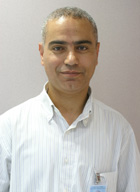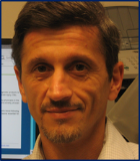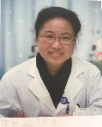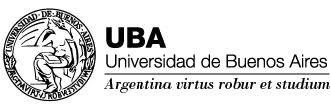Day 2 :
Keynote Forum
Harry S Goldsmith
University of California, USA
Keynote: Omental transposition to the brain for Alzheimer’s disease
Time : 9:30-10:15

Biography:
Harry S Goldsmith has been a Professor of Surgery for more than 40 years and a student of medical history throughout his life. He wrote the book A Conspiracy of Silence: Franklin D Roosevelt—Impact on History. He also invented several surgical procedures including an operation to control Alzheimer’s disease, a procedure to treat acute and chronic spinal cord injuries, as well as an operation to eliminate the need for a permanent colostomy. He is an author of 265 papers or book chapters; he has edited four surgical texts, and has received honorary degrees from two Chinese universities. He is a Surgeon, worldwide Lecturer, and an Advisor on the application of his surgical procedures.
Abstract:
It has been commonly believed that a decrease in cerebral blood flow (CBF) which routinely occurs in Alzheimer’s disease (AD) results from the death of critical intra-cerebral neurons that no longer require the maintenance of an adequate blood supply. This belief is presently being challenged by the idea that it is not neuronal death that causes a decrease in CBF, but it is actually a decrease in the CBF which leads to the death of neurons seen in AD. In association with dead neurons located within the AD brain are varying numbers of deteriorating neurons. Increasing the CBF to still viable but deteriorating neurons in AD is believed to delay and even improve the clinical manifestations of AD. This increase in CBF has proven effective in treating a group of patients with AD. The increase in CBF was accomplished surgically by placing an intact, vascularized pedicled omentum directly on the AD brain. This surgical procedure should be evaluated by a carefully controlled study since finding a treatment for Alzheimer’s disease is presently of extreme importance.
Keynote Forum
Muhammad Mahajnah
Hillel-Yaffe Medical Center, Israel
Keynote: The clinical phenotype and heterogeneity of homozygous mutation in PTRH2 gene
Time : 10:15-11:00

Biography:
Muhammad Mahajnah is an Associate Professor of Pediatrics and Pediatric Neurology at the Technion Faculty of Medicine, Israel. He completed his Medical degree in 1992 at Bruce and Ruth Rappaport Faculty of Medicine, Technion, Israel and his PhD degree in 1998. He was trained in Pediatrics at Carmel Medical Center and completed fellowship in Pediatric Neurology at Schneider Children Medical Center, Tel Aviv. He has worked with children neurological disorder for about 20 years and has special interest in neurodevelopmental disorders and neuro genetic disorders and devotes his time to both clinical work and research.
Abstract:
PTRH2 is an evolutionarily highly conserved mitochondrial protein that belongs to a family of peptidyl-tRNA hydrolases. Recently, patients from two consanguineous families with mutations in the PTRH2 gene were reported. Global developmental delay associated with microcephaly, growth retardation, progressive ataxia, distal muscle weakness with ankle contractures, demyelinating sensorimotor neuropathy, and sensorineural hearing loss were present in all patients, while facial dysmorphism with widely spaced eyes, exotropia, thin upper lip, proximally placed thumbs, and deformities of the fingers and toes were present in some individuals. Here, we report a new family with three siblings affected by sensorineural hearing loss and peripheral neuropathy. Autozygosity mapping followed by exome sequencing identified a previously reported homozygous missense mutation in PTRH2 (c.254A>C; p. (Gln85Pro)). Sanger sequencing confirmed that the variant segregated with the phenotype. In contrast to the previously reported patient, the affected siblings had normal intelligence, milder microcephaly, delayed puberty, myopia, and moderate insensitivity to pain. Our findings expand the clinical phenotype and further demonstrate the clinical heterogeneity related to PTRH2 variants.
Keynote Forum
Stanislav Svetlov
University of Florida, USA
Keynote: Genomic biomarkers of military blast brain injury compared to mechanical impact TBI
Time : 11:20-12:05

Biography:
Stanislav Svetlov has expertise and international recognition for studies in Traumatic Brain Injury (TBI), especially combat-related blast TBI proven by a number of publications and awards from Department of Defense on molecular signatures and biomarkers of blast brain injury and US patents. His goal is to determine and characterize biomarkers reflecting chronic encephalopathy, including neuroinflammation and impaired neurogenesis and repair. He is a Chief Scientific Officer at Immunova LLC, a biopharmaceutical company and Adjunct Researcher and Associate Professor at University of Florida, USA in Medicine and Psychiatry.
Abstract:
Despite progress in understanding traumatic brain injury (TBI), the mechanisms and biomarkers of neurorepair during combat blast-induced TBI remain to be elucidated. Important question to be addressed is whether blast-induced TBI signatures are similar to those after mechanical brain injury, e.g. concussion, and what may be the differences pertinent to differential diagnostics and therapeutic enhancement of brain recovery. This includes gene expression (mRNA) and its regulation (miRNA), proteomics and its associated area of metabolomics. In this study, we compared side-by-side genomic signatures of neuro injury and neuro repair in head-directed blast overpressure exposure (OBI) vs. mechanical cortical impact (CCI) and analyzed using neurosystems biology approach presenting graphic interaction map. There was a significant difference in expression of 994 genes within blast exposure groups and in 1532 genes within CCI vs. control with an overall overlap of 579 genes. Parametric and nonparametric analyses revealed significant differences in genes of neural development and repair, between blast exposures and CCI. Specifically, brain achaete-scute complex-like 1 (ASCL1/Mash1) was up-regulated, while ROBO-1/Slit and NEDD4 were down-regulated after blast exposure and changed in opposite direction after mechanical CCI. Results show disparities as well as overlaps in the expression of genes between military and civilian type of brain injury. This will help to reveal specific biomarkers of each brain insult and assist in developing diagnostics of chronic posttraumatic encephalopathy. Novel approaches in the development of neurorepair diagnostics and enhance brain recovery will be discussed.
- Neuroradiology and Neuro Imaging | Clinical Neurology and Neuropsychiatry | Neuropharmacology | Neurotherapeutics, Diagnostics and Case Studies | Spine Disorders | Neuro Marketing Strategies

Chair
Harry S Goldsmith
University of California, USA

Co-Chair
Muhammad Mahajnah,
Hillel-Yaffe Medical Center, Israel
Session Introduction
Ling Li
Xinhua Hospital - Shanghai Jiaotong University, China
Title: Neurotrophic factor reduces inflammation and improve brain neuronal regeneration in inflammatory brain injury

Biography:
Ling Li has completed her PhD and MD in 2003 at Zhejiang University School of Medicine. She is a Neurologist, Chief Physician, Professor, Supervisor for Doctor, Director of Pediatric Neurology at Xinhua Hospital Affiliated to Shanghai Jiaotong University School of Medicine, Shanghai, China. She has published more than16 papers in reputed journals. Her main research is about strategies to prevent neuronal damage in pediatric bacterial meningitis.
Abstract:
The risk of serious sequelae caused by central nerve system (CNS) infection is 30-60%. Among them, inflammation is one of the critical mechanisms. But how inflammation alters brain function remains unclear. Here, we provide solid evidence about meningitis caused by brain damage reduced host inflammatory response. Neurotrophic factor family plays an important role in neuron development, differentiation and survival. BDNF expression increased in acute S. pneumoniae meningitis, while obviously alleviated after antibiotic treatment. Neonatal meningitis caused long-term BDNF decreases were correlated to adult animal behavioral deficits. Exogenous BDNF can increase neuron survival both in cortex and hippocampus, and reversed brain damage. Meanwhile, it can increase hippocampus neuron stem cells neurogenesis. These findings indicate that BDNF regulatory expression may be parts of host inflammatory response in S. pneumoniae meningitis, and innate immune response could be a double-edged blade. Although the mechanism is still unknown. According to in vivo pneumococcal meningitis experimental models, we investigated BDNF-related signaling effects inflammatory response and hippocampal apoptosis. Before S. pneumoniae intracisternal infection, pretreatment with exogenous BDNF or TrkB inhibitor k252a and assess BDNF/TrkB-signaling axis activation or inhibition. Administered BDNF in rats reduced clinical impairment, pathological severity, and hippocampal apoptosis. Furthermore, BDNF pretreatment suppressed inflammatory factors (TNFα, IL-1β and IL-6) expression while increased anti-inflammatory factor IL-10. It also increased TrkB expression, activated downstream PI3K/protein kinase B (AKT) signaling, and inhibited MyD88/NF-κB-signaling pathway. These results indicated that exogenous BDNF treatment might be a potential therapeutic strategy for inflammatory brain injury. Here is a two-year-old boy with acute necrotizing encephalopathy by infection. After timely treatments with high-dose methylprednisolone and, immunoglobulin therapy, multiple vitamins and nerve growth factor; he had relatively good prognosis and could see neuroregeneration in follow-up brain MRI
Sergei Y Funikov
Engelhardt Institute of Molecular Biology-RAS, Russia
Title: FUS-mediated proteinopathy in mice as a model of amyotrophic lateral sclerosis

Biography:
Sergei Y Funikov has completed his PhD at Engelhardt Institute of Molecular Biology-Russian Academy of Sciences. His main research focuses on studying the regulation of small non-coding RNAs (in particular, microRNAs and Piwi-interacting RNAs) in stress response as well as investigation of the immune and neuroprotective properties of human recombinant heat shock protein 70 (Hsp70). His last study concerns the molecular aspects underlying the progression of motor neurons failure on the model recapitulating the clinical symptoms of amyotrophic lateral sclerosis.
Abstract:
Amyotrophic lateral sclerosis (ALS) is a neurodegenerative disorder leading to the eventual death of motor neurons. Described cases of familial ALS have emphasized the significance of protein misfolding and aggregation of two functionally related proteins, FUS and TDP-43, implicated in RNA metabolism. Here in, using the in vivo model of FUS-mediated proteinopathy (∆FUS1-359 mice) we performed the comprehensive analysis encompassing the onset of the first clinical symptoms inclusions formations as well as changes in gene expression profile in motor neurons and surrounding microglia. The obtained data enable to conclude that FUS-mediated proteinopathy is virtually asymptomatic in terms of both the clinical symptoms and molecular aspects of neurodegeneration until it reaches the terminal stage of disease progression (120 days age). From this time point the pathological process develops very rapidly resulting in massive FUS-positive inclusions formation accompanying the transcriptional burst in the spinal cord cells. Specifically, it manifests in activation of pro-inflammatory phenotype of microglial cells and malfunction of acetylcholine synapse transmission in motor neurons. Overall, we assume that a highly reproducible course of the pathological process, as well as described accompanying features, make ∆FUS1-359 mice a convenient model for testing potential therapeutics against proteinopathy-induced decay of motor neurons.
Xiao-Juan Zhu
Northeast Normal University, China
Title: DCC-mediated Dab1 phosphorylation participates in the multipolar-to-bipolar transition of migrating neurons

Biography:
Xiao-Juan Zhu has completed her PhD in Cell Biology from Northeast Normal University, Changchun, China and; Post-doctorate degree from Medical College of Georgia, Augusta, GA, USA. Her research interest includes “Understanding genetic, molecular and cellular basis of brain development”. She is also interested in how the dendritic spines stabilize mature, and how changes in their activities may lead to rapid remodeling of dendritic spines, as well as the defective regulation in dendritic spines that associated with human neuropsychiatric disorders, including autism spectrum. She is using primary culture neuron and genetic modified mice models to study these questions.
Abstract:
Newborn neurons undergo inside-out migration to their final destinations during neocortical development. Reelin-induced tyrosine phosphorylation of disabled 1 (Dab1) is a critical mechanism controlling cortical neuron migration. However, in reelin null mice, Dab1 tyrosine phosphorylation decreased, but not eliminated, suggesting that Reelin-independent tyrosine phosphorylation of Dab1 may occur. The roles remain unclear. Here, we report that deleted in colorectal carcinoma (DCC) interacts with disavled1 (Dab1) specifically. Based on the endogenous DCC and Dab1 expression in the developing neocortex, we demonstrate that DCC physically interacts with Dab1 both in vitro and in cortical neurons, and this interaction depends on the P3 domain of DCC and the PTB domain of Dab1. Netrin 1, a DCC ligand, binding to the DCC induces Dab1 phosphorylation at Y220 and Y232 through it has no detectably enhancing the DCC-Dab1 interaction. Interestingly, knockdown of DCC or truncation of its P3 domain dramatically delays neuronal migration and impairs the multipolar-to-bipolar transition of migrating neurons, as well as migration of newborn neurons toward to the CP, indicating that DCC is required for the proper neuronal migration, particularly for the multipolar-to-bipolar transition. Furthermore, the presence and proper phosphorylation of DCC at tyrosine 1420 is critical for neuronal migration. Notably, the migration delay and morphological transition defects are rescued by the expression of a phospho-mimetic Dab1 or a constitutively active form of Fyn proto-oncogene (Fyn), a member of the Src-family tyrosine kinases that effectively induces Dab1 phosphorylation, suggesting that Dab1 is the downstream effector of DCC during neuronal migration. Collectively, these findings illustrate a DCC-Dab1 interaction that ensures proper neuronal migration during neocortical development. Thus, our finding reveals a cross - talk between reelin and netrin 1 signaling pathways via DCC-Dab1 interaction to illustrate a previously undefined DCC-Dab1 signaling pathway that regulates neuronal migration during neocortical development.
Elena Ponomareva
Mental Health Research Center, Russia
Title: Prediction of neurotrophic therapy effectiveness in patients with amnestic type mild cognitive impairment

Biography:
Elena Ponomareva is currently working at Mental Health Research Center of Russian Academy of Medical Sciences, Russia
Abstract:
Aim: The aim of the study was to identify biomarkers for monitoring the effectiveness of Cerebrolysin treatment and to study the long-term prognosis of the therapy in patients with amnestic type mild cognitive impairment (aMCI).
Materials & Methods: 19 patients (15 women and 4 men) aging from 56 to 85 years (mean age 72 years), with a diagnosis of amnestic type MCI were included in the study. All patients had a course 20 daily intravenous infusions of Cerebrolysin therapy (the dose was 30 ml in 100 ml of physiological solution once a day with a gradual increase the dose during four days). The effectiveness of therapy was measured at 0, 4, 10, 26 week of the study on the following scales: CGI, MMSE, MoCA-test, ÐœDRS, FAB, CDT, BNT, test of 10 words Recall, Test of the naming of digits in direct order. Evaluation parameters were measured at the beginning of the study and after 4 and 12 weeks. A fragment 173-193 of the acetylcholine receptor and a fragment of the receptor 155-164 neurotrophins P75 have been used to study the level of autoantibodies in serums. The autoantibodies to neuronal acetylcholine receptor α7-type and neurotrophins receptor P75 in blood serum of all patients were tested by method of solid-phase enzyme immunoassay at 0, 10 and 26 weeks.
Results: The autoantibodies only to a fragment of 155-164 receptors of neurotrophins P75 (median 0.369) were found in the serum. The level of autoantibodies to fragment 173-193 of acetylcholine receptor in all samples was low or no changes. Statistically significant improvement of cognitive functioning on all scales was revealed immediately after the end of therapy (four weeks). In 10 weeks, the study revealed the preservation of the achieved therapeutic effect on most of the tests. By the end of the study (26 weeks) the therapeutic effect was maintained for four out of nine tests and a slight decrease in estimates for the remaining cognitive tests, but the estimate for seven out of nine cognitive tests remained significantly higher than before treatment. The long-term therapeutic effect predicting of cerebrolysin treatment was found in the study: the age of patients older than 70 years, a higher initial evaluation for the MoCA test, the best initial indicators for the test memory of the scale of Matisse dementia, a high baseline level of autoantibodies to the neurotrophin receptor P75.
Ivanova Natalia Evgenyrvna
Polenov Neurosurgical Institute, Russia
Title: Early Neuro-Rehabilitation in neurosurgery
Biography:
Ivanova Natalia Evgenievna, doctor of medical Sciences, Professor, head of the scientific Department of the "Russian Polenov Neurosurgical Institute ", - branch of “National Medical Research Center after V. A. Almazov ", chief neurologist of the Institute, honored doctor of the Russian Federation, Deputy editor-in-chief Of the Russian neurosurgical journal. prof. A. L. Polenov, member of the Board of the Association of neurosurgeons of Russia. The main directions of scientific and practical activity are neurosurgical pathology of brain vessels, neurotrauma, neurorehabilitation and ultrasound diagnostics. Author of 450 scientific works, including 30 patents and three monographs, supervisor of 30 candidates and 4 doctors of Sciences in "nerve diseases" and "neurosurgery".
Abstract:
Introduction: The purpose of early rehabilitation is promoting spontaneous recovery of patients and prevention of secondary complications.
Methods: CT, MRT, EEG, ENM, rehabilitation scales.
Results: 2000 neurosurgical patients (neurotrauma, neurooncology, vascular neurosurgery, pediatric neurosurgery, vertebrologie, epilepsy, pain and spastic syndromes) received early rehabilitation. Neuroreanimation department neurosurgical and rehabilitational departments: methods used in the acute period can produce paradoxical responses and lead to a breakdown of compensation: the need to find methods of stabilizing stem dysfunction as early as possible, stem dysfunction correction, body-oriented techniques, treatment of bulbar disorders, breathing exercises, passive gymnastics and position treatment with the gradual expansion of the motion mode, early verticalization prevention of bedsores,polymodal sensory stimulation, kinesitherapy.Consequent cognitive impairment that worsen the prognosis of rehabilitation after neurosurgical pathology, a high degree of disability, makes the problem of diagnosis and treatment of cognitive dysfunction socially significant.
Conclusions: Early rehabilitation improved the outcome and the long-term quality of life.
Amal Salah Darwish
Hearing and Speech Institute Imbaba, Egypt
Title: Cognitive and communicative deficit in mitochondrial disorders

Biography:
Amal Darwish has completed her Master’s degree in Phoniatric Science in Faculty of Medicine, at Ain Shams University, Egypt; worked in neurorehabilitation field serving as a Phoniatrician treating dysphagia, communication and educational disorders patients associated with neurological disorders, in a multidisciplinary team as the Head of Phoniatrics Unit in Physical Medicine and Rehabilitation Hospital for 17 years. She completed her PhD in Faculty of Medicine at Cairo University. She is a Senior Specialist in Phoniatrics Department in Hearing and Speech Institute, Cairo, Egypt. She has published more than 10 papers in reputed international conferences and more than 12 papers in Middle East reputed conferences.
Abstract:
Mitochondrial diseases are caused by defects in mitochondria, which are energy factories found inside almost all the cells in the body. It can cause both prominent muscular and neurological problems called mitochondrial encephalomyopathies. Mitochondrial disease is a multisystem disorder affecting more than one type of cell, tissue, or organ. Mitochondrial diseases are caused by genetic mutations. Genes involved in mitochondrial disease normally make proteins that work inside mitochondria. Within each mitochondrion, these proteins make up part of an assembly line that uses fuel molecules (sugars and fats) derived from food combined with oxygen to manufacture the energy molecule adenosine triphosphate (ATP). Mitochondrial encephalomyopathy, lactic acidosis, and stroke-like episodes (MELAS) onset: childhood to early adulthood; inheritance pattern: maternal. The hallmarks of MELAS are encephalomyopathy with seizures and/or dementia, lactic acidosis, and recurrent stroke-like episodes. These episodes are not typical strokes, which are interruptions in the brain’s blood supply that cause sudden neurological symptoms. However, the episodes can produce stroke-like symptoms in the short term such as temporary vision loss, difficulty in speaking, or difficulty in understanding speech and lead to progressive brain injury. The cause of the stroke-like episodes is unclear. Sensorineural hearing loss also is a common symptom of mitochondrial diseases. It is caused by damage to the inner ear (the cochlea) or to the auditory nerve. SNHL is permanent, hearing aids, cochlear implants indicated to stimulate the auditory nerve. The hallmark symptoms are learning disabilities. Early intervention is important to reduce the disabling features, scoping mitochondrial diseases can improve outcome.
Sergio Kosac
University of Buenos Aires, Argentina
Title: Neurophysiological monitoring during epilepsy surgeries

Biography:
Dr. Kosac Sergio, born on September 04, 1952. He is a Neurologist Physician Neurophysiologist at Austral University Hospital, working intesively in the Intraoperative Monitoring field. He is head of practical works in Neurology at University Universiry of Buenos Aires
Abstract:
Epilepsy surgery originates in the early 20th century since the discovery of functional areas, by Broca, Hitzog, and many others. Jackson’s findings who described the irritative cortical foci, and proposed their excision; until the experiencies of W Penfield, who generated a more complete functional cortical map, up to that time, specifying motor and sensitive/sensorial areas allowed surgical techniques to advance significantly. Nowadays, surgeries for reduction or elimination of cortical irritative foci, are carried out in cases of cortical dysplasia, cortical tumors, vascular malformations, etc. Although more and more accurate and satisfactory surgical techniques were developed, in same cases it is imperative to preserve functional areas, whenever they are near or over the surgical area. To prevent or minimize damages to such functional areas, it is necessary to perform intraoperative neurophysiologic techniques. In cases of epilepsy surgeries, there are two ways : one is the electroencephalogram over the cortex, named electrocorticogram. The other one is the Neurophysiologic Intraoperative Monitoring (IOM). To perform this method, we can decide, depending on the type of pathology or its localion, which technique will be applied. One technique is to locate motor and sensory areas over the dura: it is possible through a technique that applies somatosensory evoked potentials, recorded with a strip of electrodes. Through this technique, we can map out cortex areas, allowing the surgeon to know, before opening the dura, where those functional areas are. Another technique is, once motor and sensory areas are located, to find some functions over and into the motor area more accurately. This is made with a stimulator given to the surgeon, connected to the neurophisiologist’s equipment, through which, we can map out areas, i.e., hand area, leg area, etc, applying the stimulator over some points, and the neurophysiologist delivering stimuli to activate cortical motor neurons, and recording signals in the corresponding muscles. Those techniques will be showed, with case presentations, graphics and videos. The goal is to show to the audience some techniques that could improve life quality for those patients who undergo epilepsy surgeries with some risk of funcional damage.





